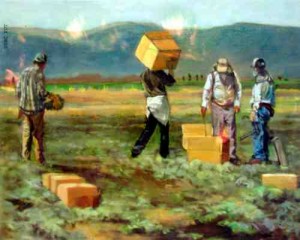Brief by Central Staff
Climate – February 2007 – Colorado Central Magazine
Last month we passed on the predictions of climate scientists, who said this would be an El Niño year. From December into February, the Pacific Northwest would get hammered, and we would be dry. Our snow would come in March and April.
So much for the experts. While Central Colorado’s blizzards weren’t as hard as those in other parts of the state (Denver was essentially shut down before Christmas, and southeastern Colorado was a disaster area with cattle stranded amid 12-foot drifts), we did get more than our share of snow.
Salida got hit with about a foot of snow on Dec. 20. Sunny skies returned, but before that could melt, another storm dropped about six inches on Dec. 29, and the new year started with another six inches or so on Jan. 5, with more snow a week later.
Typically, there’s a clear interval between snowfalls so that Salida’s progressive method of snow removal — solar energy — has time to work, but this winter hasn’t been typical.
On average, Salida gets only 5.5 inches of snow in December and 4.8 in January. The snowiest month is March at 8.4 inches, followed by November at 7.6 and April at 6.8. Average annual snowfall is 47.4 inches.
That pattern holds for Buena Vista, where March is also the snowiest month at 7.4 inches. Bjüni gets less annual snowfall — 39.5 inches — but more overall precipitation, 10.25 inches compared to Salida’s 10.10.
Moving on up the Arkansas, Twin Lakes Reservoir has an annual snowfall of 45.6 inches, with April the snowiest at 7.3 inches. Leadville gets 141.9 inches in an average year; 24.1 inches of it in April; and also averages 1.9 inches of snow in June and 0.1 in July. Total annual precipitation averages 12.25.
Climax gets 272.9 inches of snow on average, with some in every month. January and March are the snowiest at 39.9 inches.
Wetmore lives up to its name. It’s among the wettest spots in Central Colorado with 19.99 inches of annual precipitation and 136.7 inches of snow. March, at 32.0 inches, is its wettest month. Westcliffe gets 90.1 inches of snow, with March leading at 18.0 inches; and total annual precipitation averages 14.39.
Florissant Fossil Beds averages 56.3 inches of snow each year, with 13.3 inches in March, the snowiest month. Guffey gets 68.4, with 14.3 coming in March.
Fairplay labors under 108.2 inches of snow during an average winter, with the most arriving in April at 20.5 inches; and total yearly precipitation averages 15.65 inches.
Even though it often seems otherwise, Gunnison isn’t all that snowy — only 50.5 annual inches on average. But it stays around longer because Gunnison is one of the coldest spots (average daily minimum temperature is below zero in December, January, and February). Gunnison’s snowiest months are at the start of the winter (with December at 10.3; January 12.0; February 10.2) rather than in March and April like the rest of our region.
Creede likewise doesn’t get that much snow — 46.9 inches — with March leading at 8.7 inches.
The San Luis Valley is high and dry, and that’s reflected in its low snowfall. Saguache averages only 25.9 inches a year, with 4.8 in the snowiest month of March. Crestone gets 13.3 inches in March, and 61.0 in an average year. Great Sand Dunes National Park averages 40.4, with 8.3 in March, the snowiest month. Monte Vista is drier at 23.1 inches, but March still leads at 4.4 inches. At 4.9 inches, March leads in Blanca, with 25.4 inches total in an average year. Alamosa is a little snowier, 31.6 inches; its wettest months are December, 5.1 inches, and March, 5.6. Alamosa is also the driest spot hereabouts, with only 7.07 inches of total annual precipitation.
Our mountain valleys, in general, really aren’t that snowy — Denver gets 59.4 inches of snow in an average year, more than most places in Central Colorado.
But those, of course, are averages. As for this year, if December and January have brought so much snow, will March and April inspire thoughts of vacations to lands where snow shovels are unknown? And will the reservoirs and soil moisture finally recover from a five-year drought?

